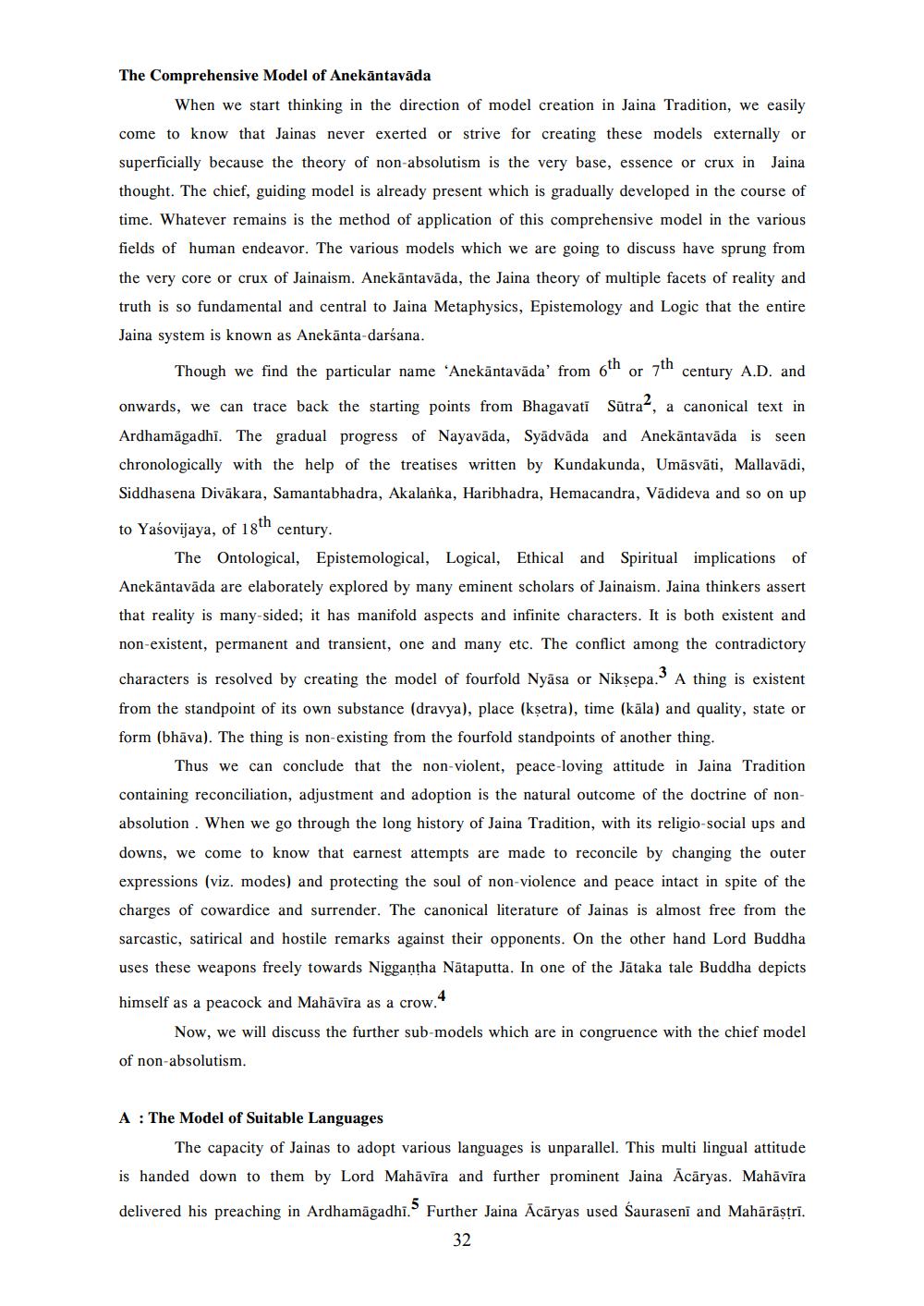________________
The Comprehensive Model of Anekāntaväda
When we start thinking in the direction of model creation in Jaina Tradition, we easily come to know that Jainas never exerted or strive for creating these models externally or superficially because the theory of non-absolutism is the very base, essence or crux in Jaina thought. The chief, guiding model is already present which is gradually developed in the course of time. Whatever remains is the method of application of this comprehensive model in the various fields of human endeavor. The various models which we are going to discuss have sprung from the very core or crux of Jainaism. Anekāntavāda, the Jaina theory of multiple facets of reality and truth is so fundamental and central to Jaina Metaphysics, Epistemology and Logic that the entire Jaina system is known as Anekānta-darśana.
Though we find the particular name 'Anekāntavāda' from 6th or 7th century A.D. and
onwards, we can trace back the starting points from Bhagavati Sūtra?, a canonical text in Ardhamāgadhi. The gradual progress of Nayavāda, Syādvāda and Anekāntavāda is seen chronologically with the help of the treatises written by Kundakunda, Umāsvāti, Mallavādi, Siddhasena Divākara, Samantabhadra, Akalanka, Haribhadra, Hemacandra, Vādideva and so on up to Yasovijaya, of 19th century.
The Ontological, Epistemological, Logical, Ethical and Spiritual implications of Anekāntavāda are elaborately explored by many eminent scholars of Jainaism. Jaina thinkers assert that reality is many-sided; it has manifold aspects and infinite characters. It is both existent and non-existent, permanent and transient, one and many etc. The conflict among the contradictory characters is resolved by creating the model of fourfold Nyāsa or Niksepa. A thing is existent from the standpoint of its own substance (dravya), place (kşetra), time (kāla) and quality, state or form (bhāva). The thing is non-existing from the fourfold standpoints of another thing.
Thus we can conclude that the non-violent, peace-loving attitude in Jaina Tradition containing reconciliation, adjustment and adoption is the natural outcome of the doctrine of nonabsolution. When we go through the long history of Jaina Tradition, with its religio-social ups and downs, we come to know that earnest attempts are made to reconcile by changing the outer expressions (viz. modes) and protecting the soul of non-violence and peace intact in spite of the charges of cowardice and surrender. The canonical literature of Jainas is almost free from the sarcastic, satirical and hostile remarks against their opponents. On the other hand Lord Buddha uses these weapons freely towards Niggantha Nātaputta. In one of the Jātaka tale Buddha depicts himself as a peacock and Mahāvīra as a crow."
Now, we will discuss the further sub-models which are in congruence with the chief model of non-absolutism.
A: The Model of Suitable Languages
The capacity of Jainas to adopt various languages is unparallel. This multi lingual attitude is handed down to them by Lord Mahāvīra and further prominent Jaina Ācāryas. Mahāvīra
delivered his preaching in Ardhamāgadhi. Further Jaina Ācāryas used Sauraseni and Mahārāstrī.
32




